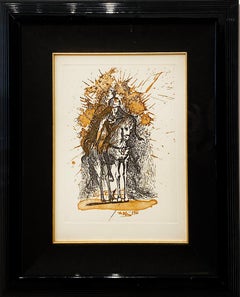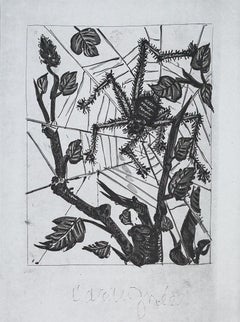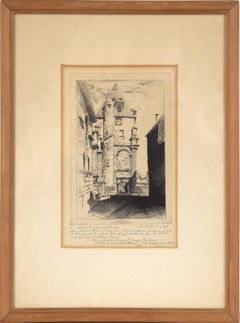Drypoint Prints and Multiples
1970s Surrealist Drypoint Prints and Multiples
Drypoint, Color
1970s Surrealist Drypoint Prints and Multiples
Drypoint, Engraving, Color
1880s Drypoint Prints and Multiples
Etching, Drypoint
20th Century Modern Drypoint Prints and Multiples
Drypoint, Aquatint
1940s Victorian Drypoint Prints and Multiples
Ink, Etching, Drypoint, Paper
1970s Surrealist Drypoint Prints and Multiples
Drypoint
20th Century Modern Drypoint Prints and Multiples
Drypoint, Aquatint
20th Century Modern Drypoint Prints and Multiples
Drypoint, Aquatint
20th Century Modern Drypoint Prints and Multiples
Drypoint, Aquatint
20th Century Modern Drypoint Prints and Multiples
Drypoint, Aquatint
20th Century Modern Drypoint Prints and Multiples
Drypoint, Aquatint
1960s Surrealist Drypoint Prints and Multiples
Engraving, Drypoint
1970s Surrealist Drypoint Prints and Multiples
Drypoint, Color Pencil
1970s Contemporary Drypoint Prints and Multiples
Drypoint
Mid-19th Century French School Drypoint Prints and Multiples
Laid Paper, Etching, Drypoint, Engraving
1960s Surrealist Drypoint Prints and Multiples
Drypoint
1980s Contemporary Drypoint Prints and Multiples
Drypoint
Early 2000s Feminist Drypoint Prints and Multiples
Drypoint
20th Century Surrealist Drypoint Prints and Multiples
Lithograph, Drypoint
1970s Surrealist Drypoint Prints and Multiples
Drypoint
2010s Drypoint Prints and Multiples
Mixed Media, Watercolor, Digital, Drypoint
1850s Surrealist Drypoint Prints and Multiples
Drypoint
1810s Romantic Drypoint Prints and Multiples
Drypoint, Vellum, Etching, Aquatint
1970s Surrealist Drypoint Prints and Multiples
Drypoint, Etching
21st Century and Contemporary Abstract Drypoint Prints and Multiples
Drypoint, Aquatint
1960s Surrealist Drypoint Prints and Multiples
Engraving, Drypoint
1960s Surrealist Drypoint Prints and Multiples
Watercolor, Etching, Drypoint, Paper
1960s Cubist Drypoint Prints and Multiples
Aquatint, Drypoint, Etching
20th Century Surrealist Drypoint Prints and Multiples
Lithograph, Drypoint
Early 2000s Contemporary Drypoint Prints and Multiples
Drypoint, Etching
1960s Surrealist Drypoint Prints and Multiples
Drypoint, Watercolor
1970s Surrealist Drypoint Prints and Multiples
Engraving, Drypoint
1810s Romantic Drypoint Prints and Multiples
Aquatint, Drypoint, Vellum, Etching
1970s Surrealist Drypoint Prints and Multiples
Paper, Drypoint, Etching
1970s Surrealist Drypoint Prints and Multiples
Drypoint, Color Pencil
1940s Drypoint Prints and Multiples
Drypoint, Aquatint
1970s Surrealist Drypoint Prints and Multiples
Drypoint, Paper, Aquatint
1960s Surrealist Drypoint Prints and Multiples
Drypoint
2010s Drypoint Prints and Multiples
Mixed Media, Watercolor, Drypoint, Ink
1920s American Modern Drypoint Prints and Multiples
Drypoint
Late 20th Century Surrealist Drypoint Prints and Multiples
Drypoint, Paper
1960s Surrealist Drypoint Prints and Multiples
Drypoint
1970s Surrealist Drypoint Prints and Multiples
Drypoint, Paper, Aquatint
2010s Drypoint Prints and Multiples
Paper, Drypoint
1970s Surrealist Drypoint Prints and Multiples
Drypoint, Paper, Aquatint
1970s Surrealist Drypoint Prints and Multiples
Drypoint, Paper, Aquatint
Early 20th Century Post-Impressionist Drypoint Prints and Multiples
Drypoint
1950s Abstract Drypoint Prints and Multiples
Drypoint, Etching, Monotype
1970s Surrealist Drypoint Prints and Multiples
Drypoint, Paper, Aquatint
1970s Surrealist Drypoint Prints and Multiples
Drypoint, Paper, Aquatint
1980s Abstract Drypoint Prints and Multiples
Paper, Drypoint
1970s Surrealist Drypoint Prints and Multiples
Drypoint, Paper, Aquatint
1980s Abstract Drypoint Prints and Multiples
Paper, Drypoint
1960s Cubist Drypoint Prints and Multiples
Aquatint, Etching, Drypoint, Paper
Late 20th Century Surrealist Drypoint Prints and Multiples
Drypoint, Paper
1970s Surrealist Drypoint Prints and Multiples
Drypoint, Aquatint, Paper
1920s Surrealist Drypoint Prints and Multiples
Drypoint, Etching
1920s Expressionist Drypoint Prints and Multiples
Drypoint, Etching
Original Drypoint Art and Other Fine Art Prints
Original drypoint prints and other types of fine art prints can help enhance any room in your home while supporting your effort to tie an interior design together.
Similar to engraving, with drypoint, an artist incises a metal plate with a sharp tool. As the metal is carved, metal shavings, also called the burr, build up in the grooves. But unlike with engraving, the burr is not cleaned away with drypoint, resulting in very soft, velvety lines. Since the burr slowly wears away with each printing, fewer impressions can be made, and the first impression tends to be stronger than the last — a characteristic that sets the technique apart from many other printing methods.
Drypoint is a simple technique used to produce intaglio prints. Intaglio is a broad term for the variety of methods used to create images by incising a metal plate, either with a sharp instrument (engraving, drypoint and mezzotint) or with acid (etching, aquatint and photogravure).
“If you talk to great artists, they see printmaking as another part of their practice that often informs what they do,” says Sharon Coplan Hurowitz, a print specialist and art adviser who has worked on major print projects over the years with Johns and Ellsworth Kelly and authored the catalogue raisonné of John Baldessari’s prints.
Find a collection of drypoint art and other types of prints on 1stDibs.
Read More
Art Brings the Drama in These Intriguing 1stDibs 50 Spaces
The world’s top designers explain how they display art to elicit the natural (and supernatural) energy of home interiors.
Welcome (Back) to the Wild, Wonderful World of Walasse Ting
Americans are rediscovering the globe-trotting painter and poet, who was connected to all sorts of art movements across a long and varied career.
Shapero Modern’s Director Tells Us All about 20th-Century Prints
Tabitha Philpott-Kent knows a lot of art multiples. Here, the London gallery director talks about what makes printmaking so fabulous.
Yoshitomo Nara Puts a Punk Rock Twist on the Traditional Prints of His Ancestors
The forever-rebellious Japanese artist craftily defaces famous Edo Period woodblock prints with “In the Floating World.”
Red Grooms Salutes the ‘Ninth Street Women’ Who Revolutionized Modern Art
In a new show of peppy portraits, the 85-year-old artist looks back at 1950s New York, when the Abstract Expressionists ruled the scene. Only now, the women Ab-Ex artists get more of the spotlight than the men.
Just What Is an Intaglio Print, and What Makes It a Good Investment?
Bay Area art publisher Rhea Fontaine explains the difference between intaglio and woodcut printing, how to frame fine art prints and what makes them attractive to collectors.
Andy Warhol Piles Up the Gifts in This Fanciful Christmas Print
Created in the late 1950s, it’s one of a surprising number of holiday-themed works by the prolific Pop artist.
A Derrick Adams Double Portrait Brings Out the Interior Lives of His Subjects
Adams has skyrocketed to art superstardom with his exuberant depictions of Black life. Here's what makes his work important to our times.





